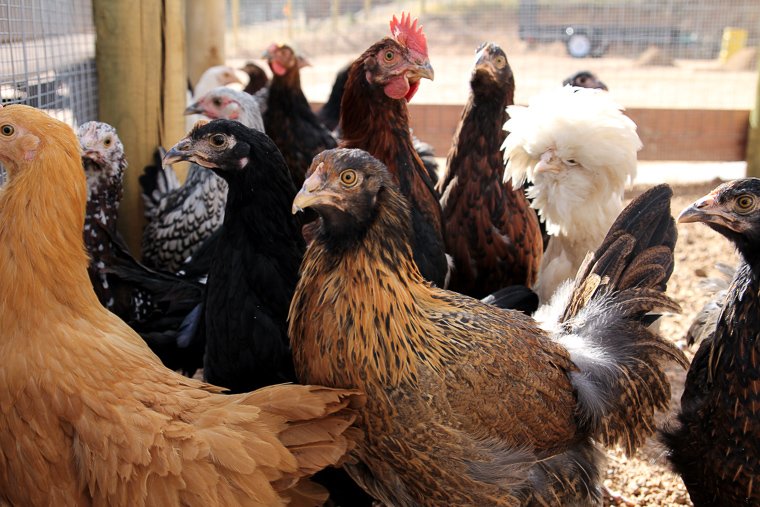
This post may contain affiliate links. See my full disclosure. As an Amazon Associate, I earn from qualifying purchases.
I did a fair amount of research online about raising chicks before our first batch arrived. Now that our chickens have been with us for a while, we’ve realized there were a few things the internet didn’t prepare us for ahead of time.
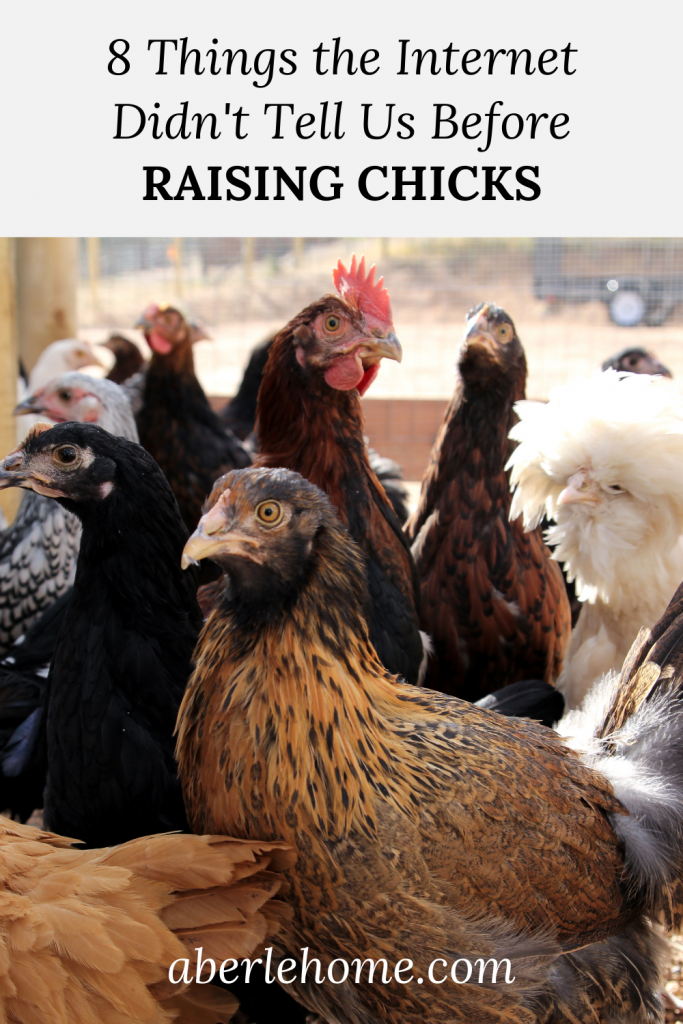
*Updated 8/30/23
Raising new chicks is fun and rewarding! You can read about our chick brooder set up and how we care for our chicks in the beginning.
There’s nothing like hearing their little peeps throughout the day, playing with them, and watching them race through their brooder!
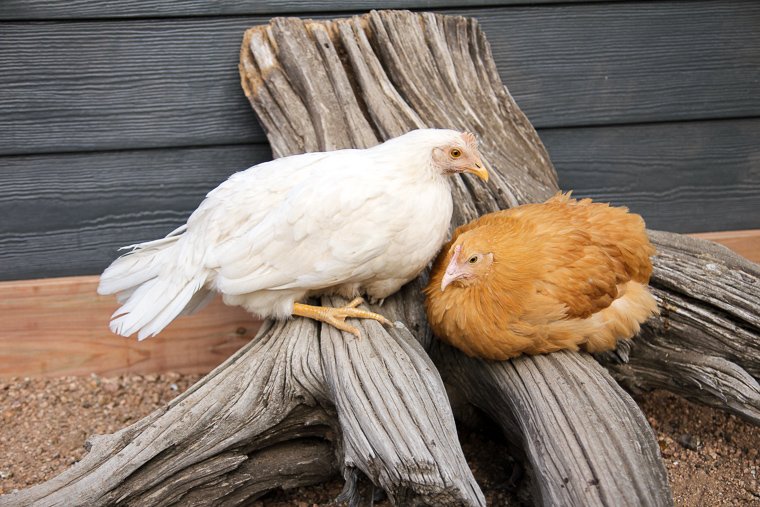
Now we’ve been chicken keepers for a while. Looking back, we have learned and experienced a lot that we weren’t expecting after our initial research.
Hopefully this article will be insightful and helpful for you as you begin raising your own chicks!
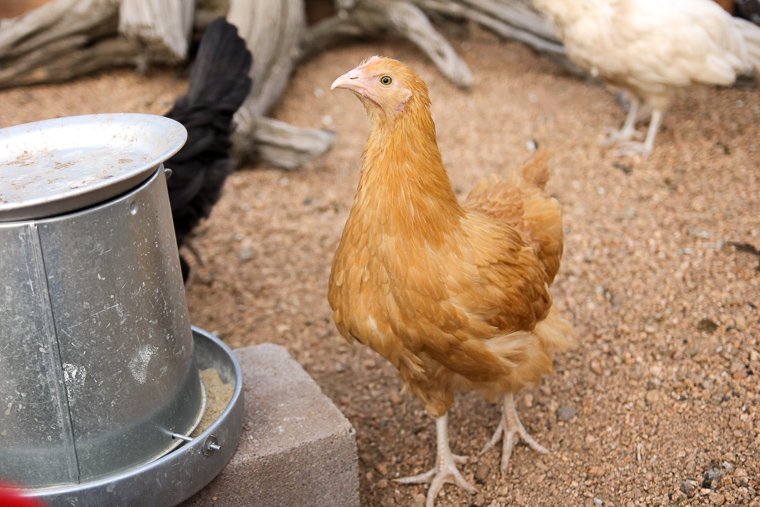
1. Chick crops get very full after they eat – no they probably don’t have impacted crop.
Chickens have an organ called a “crop” at the front right side of their breast. The crop basically stores food until it continues on through the chicken’s digestive system.
If food isn’t passing through the crop normally, it can become impacted or even turn “sour” from a yeast infection.
I remember when our first chicks were in their second week of life, we started noticing how big their crops were compared to their tiny bodies.
My pearl-white leghorn chick looked lopsided due to her crop bulging out so far. I wish I would’ve snapped a picture at the time.
I noticed a few of the other chicks looked almost the same. I was convinced they had impacted or sour crops from eating too much bedding.
I started giving them olive oil through a dropper and massaging their crops gently in case it would help.
This went on for a couple days before I decided to hold back their food overnight.
By morning, their crops were nearly empty. It was then that I realized they didn’t have a problem at all. They were just little piggies, filling themselves up before bedtime each day.
This is not to say that a chick could never get an impacted crop, but if your chicks are eating chick starter, chick grit, and only small amounts of acceptable treats, they are likely just very full.
2. Even chicks may cannibalize each other if they run out of food.
This was one of those problems I didn’t expect to face with chicks.
We had a point in our chick raising a few weeks in where the chicks were getting too big for the little feeder we started out with. They would knock it over and empty the feed quicker than we realized.
One day we forgot to check the feeder in time.
This little oversight paired with the size of our flock led to three of our chicks sustaining pecking wounds. We had to keep them separated from the others until they had healed, since once chickens see blood, they will continue to peck.
It was a debacle that could have been easily prevented.
You’ll definitely want to be prepared with the right equipment from the beginning. Those cute little feeders and waterers are perfect for the first couple of weeks.
Just know you’ll have to transition to bigger ones once your chicks are strong enough to tip their food over or consume the feed quickly.
This is a good segue to the next point:
3. Have a way to separate an injured chick or chicken.
Chickens may bully each other or sustain injuries for various reasons.
Though they are innocent fluff balls the first two or three weeks, they quickly get stronger and begin to work out their pecking order.
Even before they are old enough to go out to the coop, you’ll want to have a plan about how you can separate a chicken should it become wounded.
You could make a separated area within the chick brooder out of chicken wire or use a separate container.
If you separate a bird for more than a few days, you’ll want to introduce it back to the flock slowly (in a way the flock can see the chicken, but not make contact with it yet).
We love to use a wire dog kennel in our chicken run to reintroduce birds or new chicks.
4. Some breeds can be difficult to mix with others.
We had problems with our flock bullying our two light-colored Polish chicks (a chicken breed with awesome crests), and we ultimately had to put one down. Our other chicks were enticed to pull their head feathers and peck the tops of their pink heads where new feathers were growing in.
Thankfully, our white Polish chicken is faring well after we gave her time to heal and reintroduced her slowly to our flock, but we always have to keep an eye on her.
I had researched the Polish breed’s temperament, how they would do in confinement, and how they would do in our climate. However, I forgot to research how they would fare in a mixed flock.
Certain intelligent breeds, in contrast, become bullies when confined to a run due to boredom. Wyandotte chickens are one breed that do much better in a free-ranging situation.
Make sure you know what you’re getting yourself into with the breeds you choose. Weigh the pros and cons of keeping a certain breed that may need more protection or stimulation.
5. Be prepared to dispatch or lose a chick or adult chicken.
Not everyone will have access to avian veterinary care (or be willing to pay for care outside of home remedies, for that matter).
Occasionally you’ll go out to your coop and find that a chicken has passed away already for an unknown reason. It’s a sad but normal part of chicken keeping.
If a chicken sustains substantial injury and is suffering or comes down with an illness that could compromise your entire flock, it may be the most compassionate choice to dispatch the chicken.
YouTube is a great resource to learn how to do this humanely if you don’t have a friend that can help you the first time.
6. Before you raise chicks, you’ll need a plan for extra roosters, flock bullies, or aging hens you can’t keep.
Even if you purchase all pullets (female chicks), 10% of them will likely turn out to be cockerels (males). Cockerels can also turn out to be real meanies at maturity, attacking anyone they deem an intruder (even small children!).
We currently have three cockerels in our flock, and I’m guessing we’ll be able to keep only one rooster for the number of hens we have.
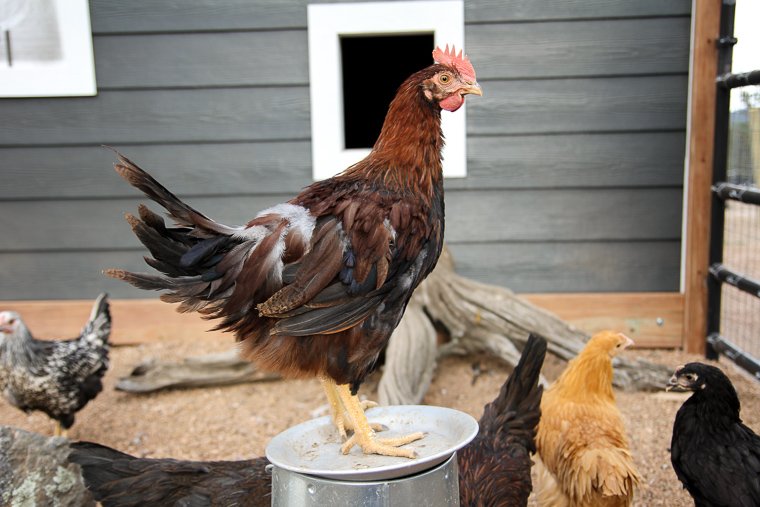
I knew this ahead of time.
But the reality that we’ll be butchering these extra roosters is something I didn’t want to think too much about before now. We aren’t accustomed to butchering animals for our own meat yet.
You’ll want to make sure you have a plan in place ahead of time for extra roosters that you won’t be able to keep.
Also keep in mind that hens are productive their first 3-4 years of life. After that, their laying slows considerably even though they could live to be around 8-years-old.
You’ll have to decide if you’ll be keeping aging chickens around as family pets, or if you’ll be thinning and replenishing your flock regularly for plenty of fresh eggs.
7. Your chicken coop will take longer to build than you think.
A confession… I had read in a couple articles on the internet to have a coop ready and done before even getting chicks in the first place. But did we listen? No, we did not.
If you’re buying a prefabricated coop and run, you’re good to go. We decided to convert a greenhouse shed into a coop for a bigger, sturdier option and build a run off the side.
But we underestimated how long it would take to finish, and our first chicks grew quickly.
We experienced a lot of stress trying to get the coop and run done so the chickens could go outside, and the chicks were in our basement longer than we had hoped.
Chicks are super dusty, I’ll tell you that much!
So you do better than we did, and make sure you have your coop done before you start raising chicks, okay? Okay.
Also, do your research and insure that your coop and run are completely predator proof. If there’s a weakness in your housing, a predator will find it eventually.
8. Chickens are messy.
You might have a romanticized version of chicken-keeping in your mind that has far less chicken manure than reality will show you. Chickens poop anywhere and everywhere.
Your clean new chicken coop will soon be dusty with splats of manure on the walls. Your run will require maintenance to keep the mud and manure in check.
The best way to keep your chickens healthy is to give them the right setup from the get-go and keep everything maintained properly to prevent parasites and disease.
9. Raising chicks is satisfying.
Despite these few challenges and skewed expectations, we didn’t realize just how satisfying it would be to raise chicks and have adult birds on our property.
To me, raising these animals runs along the same vein as growing food and baking sourdough bread from scratch. We won’t have to rely on the grocery store for everything we eat.
We get fresh eggs from birds that we raised from the beginning, all while getting to watch them and interact with them daily! What a treat.
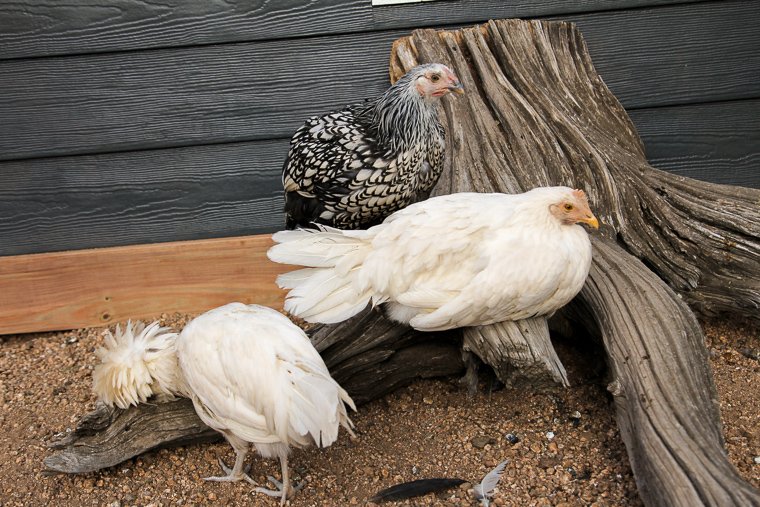



Great article Leanna. I love the pictures of your chickens. They look so healthy and happy!
Thank you so much!